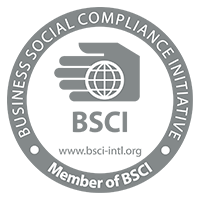
The export scenario between Bangladesh and China in the Ready-Made Garments (RMG) sector presents several opportunities for Bangladesh. The RMG industry has played a vital role in Bangladesh's economic growth, and China has been a significant player in the global textile and apparel market.
Here are some opportunities for Bangladesh in the RMG sector when it comes to exporting to China:
Bangladesh and China are the two largest exporters of ready-made garments (RMG) in the world. In 2021, Bangladesh exported $34.1 billion worth of RMG, while China exported $288.7 billion worth of RMG. This means that China is still the dominant player in the RMG market, but Bangladesh is catching up fast.
There are a number of factors that are driving the growth of the RMG industry in Bangladesh. These factors include:
- The low cost of labor in Bangladesh.
- The improved quality of garments produced in Bangladesh.
- The growing demand for RMG from developed countries.
Bangladesh is also well-positioned to take advantage of a number of opportunities in the RMG market. These opportunities include:
- The growth of online shopping.
- The rise of sustainable fashion.
- The increasing focus on quality.
- The need for innovation.
Bangladesh is already a major supplier of RMG to developed countries. However, the country has the potential to become an even larger supplier in the coming years. By taking advantage of the opportunities that are available, Bangladesh can continue to grow its RMG industry and become a major player in the global market.
- Lower production costs: Bangladesh offers lower production costs compared to China, which provides a competitive advantage. Factors like lower labor costs, availability of skilled and semi-skilled workers, and relatively lower operational expenses make Bangladesh an attractive sourcing destination for Chinese buyers.
- Preferential trade agreements: Bangladesh enjoys preferential trade agreements with China, such as the Asia-Pacific Trade Agreement (APTA) and the Bangladesh-China Free Trade Agreement (BCFTA). These agreements provide tariff concessions, reduced customs duties, and trade facilitation measures, making it easier for Bangladesh to export RMG products to China.
- Diversification of sourcing: With rising labor costs in China, Chinese manufacturers and buyers are increasingly looking for alternative sourcing options. Bangladesh's RMG industry offers a viable alternative due to its competitive pricing and ability to handle large-scale production orders.
- Rising demand in China: China has a growing middle class with increasing disposable income, leading to a rise in consumer demand for affordable and trendy clothing. Bangladesh, with its capability to produce a wide range of garments at competitive prices, can tap into this expanding market and meet the demand for ready-made garments in China.
- Sustainable and ethical production: There is an increasing global demand for sustainable and ethically produced garments. Bangladesh has been making progress in improving its compliance with social and environmental standards in the RMG sector. This presents an opportunity for Bangladesh to position itself as a responsible sourcing destination for Chinese buyers who prioritize sustainability and ethical production practices.
- Product diversification: Bangladesh has primarily been known for producing basic garments like shirts, trousers, and knitwear. However, there is an opportunity for Bangladesh to diversify its product range and offer value-added items such as high-quality fashion garments, sportswear, outerwear, and accessories. This can help cater to the evolving preferences of Chinese consumers and expand the export portfolio.
- Collaborative partnerships: Bangladesh and China can foster collaborative partnerships in the RMG sector. Chinese manufacturers can invest in Bangladesh's garment industry, bringing advanced technology, expertise, and market knowledge. Such partnerships can enhance the productivity, efficiency, and quality of Bangladesh's RMG sector, enabling it to cater to the demands of the Chinese market more effectively.
It's important to note that while there are opportunities, there may also be challenges such as competition from other sourcing destinations, the need for further improvements in infrastructure and logistics, and maintaining compliance with international standards. Nonetheless, with strategic planning, investments in skill development, and continuous improvements, Bangladesh can leverage the export opportunities in the RMG sector when it comes to China.
Leave a Reply
Your email address will not be published.






















Comments
0 Comment